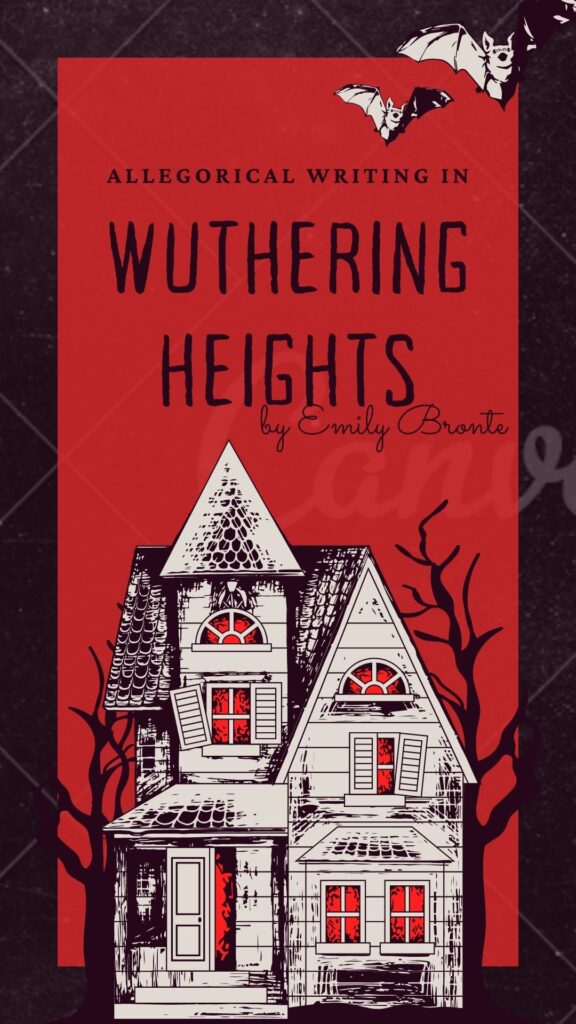
Elements of Gothic Symbolism.
The word ‘Gothic’ originated from a music category with dark morbid lyrics. In literature, Gothic fiction refers to the one exploring the elements of fear (even horror – haunted castles/homes), death and gloom and the romantic elements of nature, individuality and high emotion.
The protagonists of such novels are usually Gothic heroes, who are hard-core romantics (Gothic and romance are intricately related)
Edgar Allen Poe’s poem ‘Annabel Lee’ or ‘The Black Cat’ and works of Charles Dickens, Mary Shelley’s Frenkenstein, Bram Stoker’s Dracula, Oscar Wilde’s The Picture of Dorian Gray are other examples using Gothic symbolism.
It includes mystery and suspense, (burials, ghosts, flickering candles etc. Ann Radcliffe’s 1794 novel, The Mysteries of Udolpho is a suitable example.) foreshadowing – omens and curses, settings such as gloomy castles, mountain regions, graveyards etc.
Supernatural Elements
While apparitions are characterised in a story to evoke fear or suspense, Wuthering Heights, a 430-page read, except at three or four instances, uses supernatural elements to mostly convey the psychological suffering of Heathcliff through his loss of Catherine.
(Few instances of supernatural occurrence in the story – after dozing off to sleep dreaming about Joseph, Lockwood experiences the presence of a ghost in Wuthering heights and is woken up by the rubbing of a branch of fir-tree against the window lattice. Also, when Nelly receives Heathcliff in a ‘ghastly paleness’, few days before his death or when Heathcliff recounts his ghostly encounter with Catherine’s spirit, and when after his death, people strongly believe that Heathcliff haunts the moors and Wuthering Heights.)
The Moors or the open fields
A silent but powerful link between the two households.
The emphasis on the moors in the story – wide, wild expanses but yet infertile lands – symbolise a linkage between the two households – Wuthering Heights and Thrushcross Grange, while also separating them from the rest of the village to give a feel of exclusivity, epitomizing the two homes as two major leads of the story – one as the hero and the other in a strong supportive role. The moors also represent Heathcliff and Catherine’s wild and free-spirited love.
The two houses, more than anything else, represent the temperament of their owners – one, God-fearing, peaceful and calm, similar to the description of his residence (Edgar – owner of Thrushcross Grange) and the other – owners of Wuthering Heights – one, a child of open lands and wilderness (Heathcliff) and the other, the epitome of aggression (Hindley).
Through through certain props in the setting of the story, Bronte has bridged the gap between the presence and physical absence of the leading characters to strengthen the plot.
Like the oak-paneled bed is symbolic of Catherine’s childhood, it symbolized also the isolated and secret life of Catherine when she hid from Heathcliff and wrote her journals, the corner of the bed dearest to her and provided comfort to the small girl escaping violence and searching for her expression. Towards the end of the story, Heathcliff too dies in the same bed with the window open, symbolizing that his spirit has escaped to become one with Catherine’s.
When Lockwood sees Catherine’s ghost through the same window, desperately wanting to come inside, it symbolized the fact that nobody can be spared loneliness in a place that belonged to someone, who so passionately sought its company that it seemed to be possessed by her eternally, even beyond her death.
The windows and the lattice
The windows and the lattice pervade the story as symbols of enclosure and entry of the elements of the world outside, especially the weather – sometimes alien but mostly resonating with the world within Wuthering Heights.
Weather as a prominent symbol in the story also describes the tumult within the hearts of its inhabitants – the characters have been firmly rooted in the natural images of their environment. The elementary forces of nature have been aptly used by the storyteller to introduce the readers to the changing landscapes of the characters’ emotions by way of narration and dialoguing.
Taking Nelly’s narration as an example when she described the night of Heathcliff’s departure from Wuthering Heights, we have this –
‘About midnight, while we still sat up, the storm came rustling over the Heights in full fury. There was a violent wind, as well as thunder, and either one or the other split a tree off at the corner of the building; a huge bough fell across the roof and knocked down a portion of the chimney-stack, sending a clatter of stones and soot into the kitchen fire.’
Wuthering Heights, during the time of its first release in 1847 was considered controversial on religious and moral grounds. But today it is one of the greatest classics in English literature. The symbolic devices the author uses to communicate the soulful love, wilderness and emotional turmoil of her lead characters, remain a subject of interest for many literature enthusiasts and language experts.
To me, the book, after three reads, has become a treasure to cherish and a tale to revisit, whenever the weather reminds me of Nelly narrating the intriguing story of Catherine and Heathcliff.
